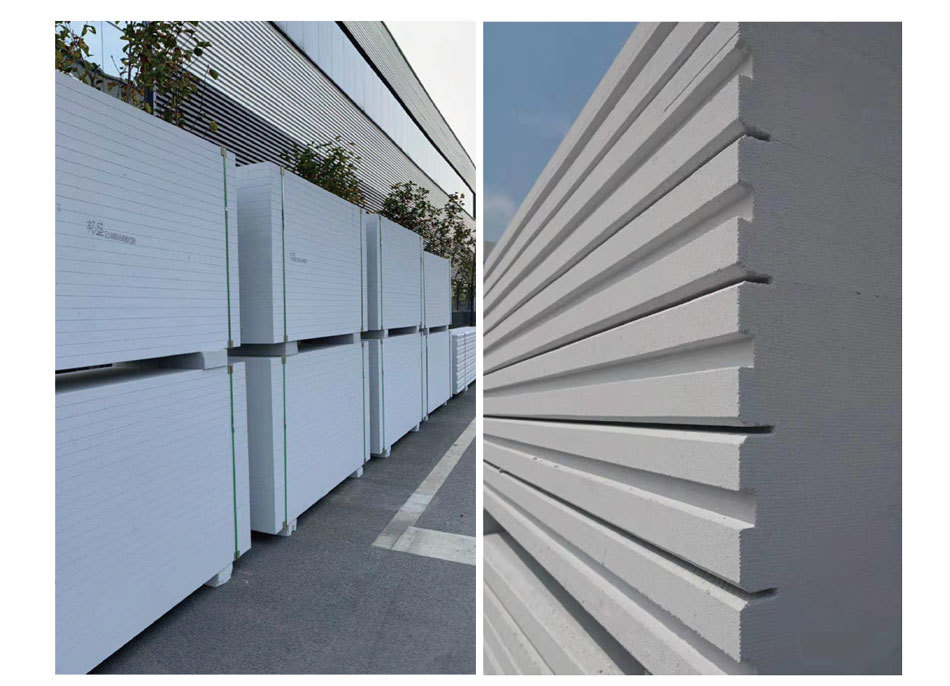加气板材生产线的工艺介绍
发布时间:
2025-01-09
在之前的文章中为大家介绍了加气混凝土砌块生产线的工艺流程,今天就给大家讲一讲加气板材生产线的生产工艺,希望对大家有所帮助。

按B06级加气混凝土板材(容重600KG/m3),其设计配合比(按质量计算):水料比:0.6。沙:70%、生石灰:18%、水泥:10%、石膏:2%、 铝粉500 g/m3
生产流程:
a、沙进料仓,石灰、石膏进厂后经过破碎、球磨、当混合料细度达到 3500-4000cm2/g后,由斗式提升机提升至粉灰仓备用。原料处理及主要防尘点都配备了先进的脉冲除尘设备,确保达到《大气综合排放标准》GB16297-3012。
b、钢筋加工:是生产加气混凝土板材的特有工序,包括钢筋的除锈、调直、切断、焊接、涂料制备、涂料浸渍和烘干。钢筋是生产加气混凝土板的结构材料,工序控制不仅影响产品质量,更直接影响建筑物的结构性能与安全性。
c、钢筋网片组装:钢筋网片组装工序是把经过防腐处理的钢筋网,按工艺要求的尺寸和相对位置组合后待浇注完毕后装入模具中,并使其固定。
d、配料搅拌:灰浆、石灰粉、水泥各自计量,按顺序加入浇注搅拌机内进行混合搅拌,搅拌时根据工艺要求向搅拌机内通入一定量的蒸汽,使搅拌机内料浆温度达到40-45℃左右,搅拌时间约2-3min,铝粉计量系统实现铝粉存储、计量、制浆等一系列操作,制成铝粉悬浮液备用。放料浆前,打开铝粉搅拌机下阀门,使铝粉悬浮液流入浇注搅拌机内混合搅拌,搅拌时间不超过40s,然后将料浆注入模具。整个周期约4min,整个系统采用电脑集中控制,实现全自动配料精确控制,实现远程操控和故障诊断。
e、浇注完毕后将模具通过气泡整理机进行除气泡,再通过变频摆渡车转移至静养区进行初凝,养护温度约为40-45℃,模箱采用摩擦轮牵引的方式,保证模箱平稳运行至养护室进行养护,整个静停养护室的预养温度可实现自动控制,静停时间90-130min,达到切割强度后,拉出静养室。
f、坯体通过翻转吊具放置在切割小车上,小车将坯体经过纵切、切槽、模切等工序实现坯体六面切割,达到相应规格尺寸(尺寸误差在±1mm)。坯体切割完成后,吊运至翻转去皮装置,将底层废料进行回收。然后,半成品吊具将坯体连同侧板吊至釜前蒸养小车上进行编组。切割机具有很高的刚度,不变形、设备精度高、耐磨性好,可以长时间的保证产品的切割精度,生产过程中产生的废水、废料经废料回收系统回收,与新料浆进行重新混合搅拌二次利用,整个切割过程所有废料全部回收。
g、针对寒冷条件,在釜前增设预养窑,其作用是保证坯体的釜前编组时,不受低温环境的影响,同时可适当降低蒸压养护的周期。
h、坯体进入蒸压釜进行蒸压养护,养护时间约为8-10h。整个蒸压养护工艺过程中蒸压釜会产生大量的余汽及冷凝水。在进行整个生产线工艺设计方案中充分利用蒸压釜排的余汽和冷凝水。蒸压釜产生余汽主要可以用来预热升压釜的制品及釜体温度,同时,可以将剩下的余汽用来作为静停养护室、料浆加热的热源,寒冷地区还可以用来供暖。同时蒸压釜产生的冷凝水,由于其中含有害物质和刺激性气味,不可直接用于生活,但可以用其余热通过热交换器来加热生产和生活用水,而冷凝水则可以用于配料和湿磨工艺,节约用水,保护环境。
i、蒸养完成后的坯体分垛放置,自动打包。分离的模具由小车运输至合模区清洗合模,涂油后循环使用。
聚焦热点




